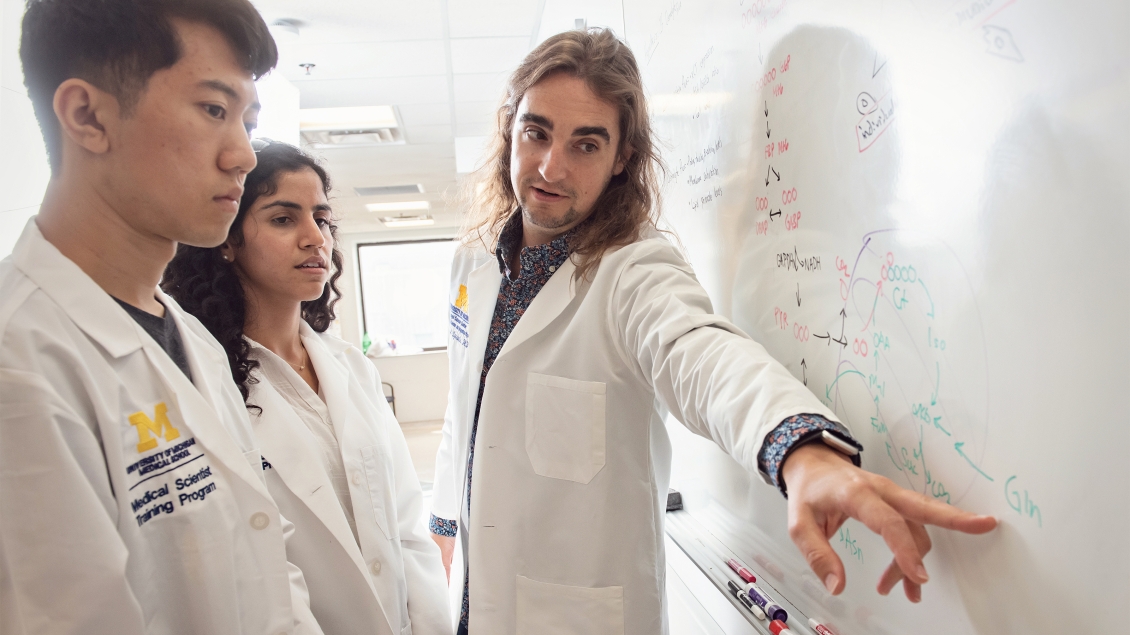
Tenure Track Duties
Tenure Track duties include instruction, scholarly activity, contribution to the Medical School mission, and often professional work that relates to health care.
This is the rank appropriate to a person who has demonstrated competence in teaching and scholarly activity but has yet to achieve exceptional status as a teacher or regional/national recognition in their professional field. Persons who have begun to publish scholarly work and show evidence of trajectory of obtaining external research funding. May have had teaching responsibilities (e.g., seminars, bedside instruction, small group interactions and/or didactic activities) before their initial faculty appointment, and may begin their faculty careers at the rank of assistant professor.
Appointment to associate professor is given only to persons of well-established professional position and demonstrated scholarly ability that positively impacts their field. Those promoted or appointed to this rank must have achieved national recognition for scholarly accomplishment of significance as evidenced by: evaluations from independent national leaders in their field; national lectureships; memberships on editorial boards and peer review committees; significant involvement in peer organizations beyond membership, and scholarship. Scholarly independence or a strong collaborative contribution to a scientific team effort is typical for associate professors. Usually this is evidenced by peer-reviewed publications published over the previous five years.
For those with a predominate expectation of clinical or laboratory research, a sustained independent level of external research funding typically from federal sources is the norm. An associate professor must have demonstrated a significant contribution to the educational missions of this school or another medical school. If it pertains to their professional field, high-quality clinical care or clinical service is expected. Persons with clinical responsibilities are board certified before they become associate professors.
Appointment to professor is given only to persons of nationally and internationally established professional reputation and demonstrated scholarly ability. This title is our highest academic rank. All of the expectations for the associate rank pertain in equivalent or greater measure for the professor. The difference between the ranks of professor and associate professor is primarily one of ongoing achievement, usually over a period of five-to-ten years; promotion to professor is not automatic after a certain time in rank as associate professor.
A person appointed to the rank of professor must have demonstrated continued scholarship, productive research, contributions to the teaching mission, organizational service, and clinical care when relevant to career. This ongoing achievement is roughly equivalent in quantity to the accomplishments that gained the previous promotional step. National and international impact must pertain to this person’s work. Continued and consistent publication that contributes significantly to an area of knowledge is essential.
It is expected that the case for promotion to the professorial rank may reference the work done to achieve the rank of associate professor, but will be based largely on new work accomplished since the last promotional review. For those predominantly involved in clinical, educational, or laboratory research, sustained independent level of external research funding typically from federal sources is the norm. Unless otherwise specified, appointments and promotions to professor are with tenure. Persons may be appointed as professors without tenure.
When a non-tenured tenure track faculty member joins the Medical School, two clocks begin to run. One is the University-wide tenure clock, the other is the Medical School tenure clock.
University-wide Tenure Clock: The maximum probationary period of non-tenured Tenure Track faculty consists of service with the University for a total of 10 years in the rank at the level of assistant professor or higher (SPG 201.13).
The University views the ten years as a deadline within which the University must either grant tenure to, or terminate, a tenure track faculty member. Except in extraordinary cases, the decision about tenure for a faculty member must be made no later than the end of the faculty member's ninth year on the University-wide tenure clock. More information on the University Tenure Clock can be found here: (UM Provost: Tenure Clock).
Medical School Tenure Clock: The Medical School generally reviews non-tenured faculty members for tenure in the sixth or seventh year of the tenure probationary period. This normative time to tenure review is well within the maximum 10-year period allowed by the university. Those who are not ready for a promotion review for tenure during the sixth or seventh year of the probationary period may ask for an extension that is within the University’s ten-year maximum tenure clock. The request will be reviewed for approval by the faculty member’s department chair and the medical school. Alternatively, a one-year terminal appointment for the year following the review may be offered.
If you are a current U-M Medical School faculty or staff member looking for additional information, please visit the Office of Faculty Affairs intranet site.